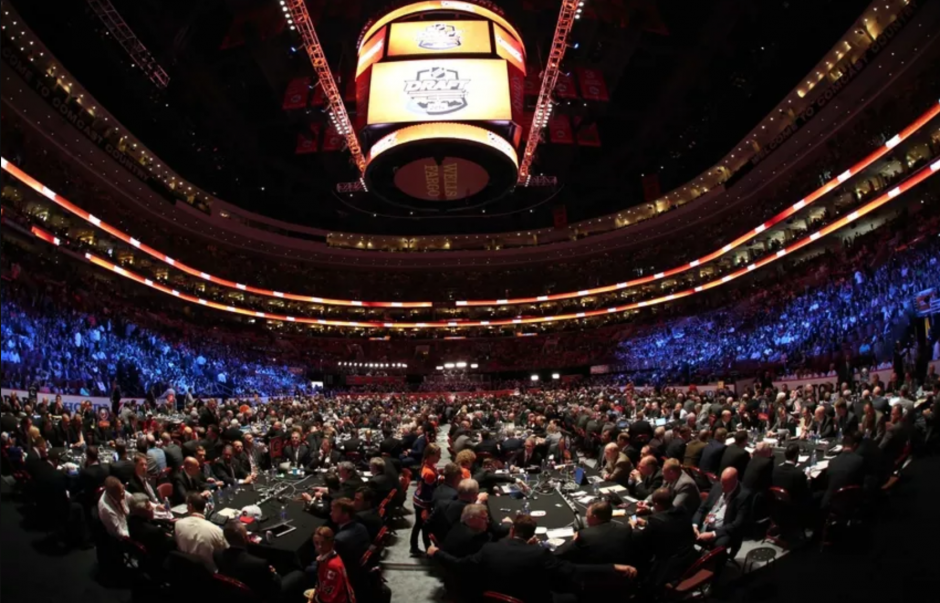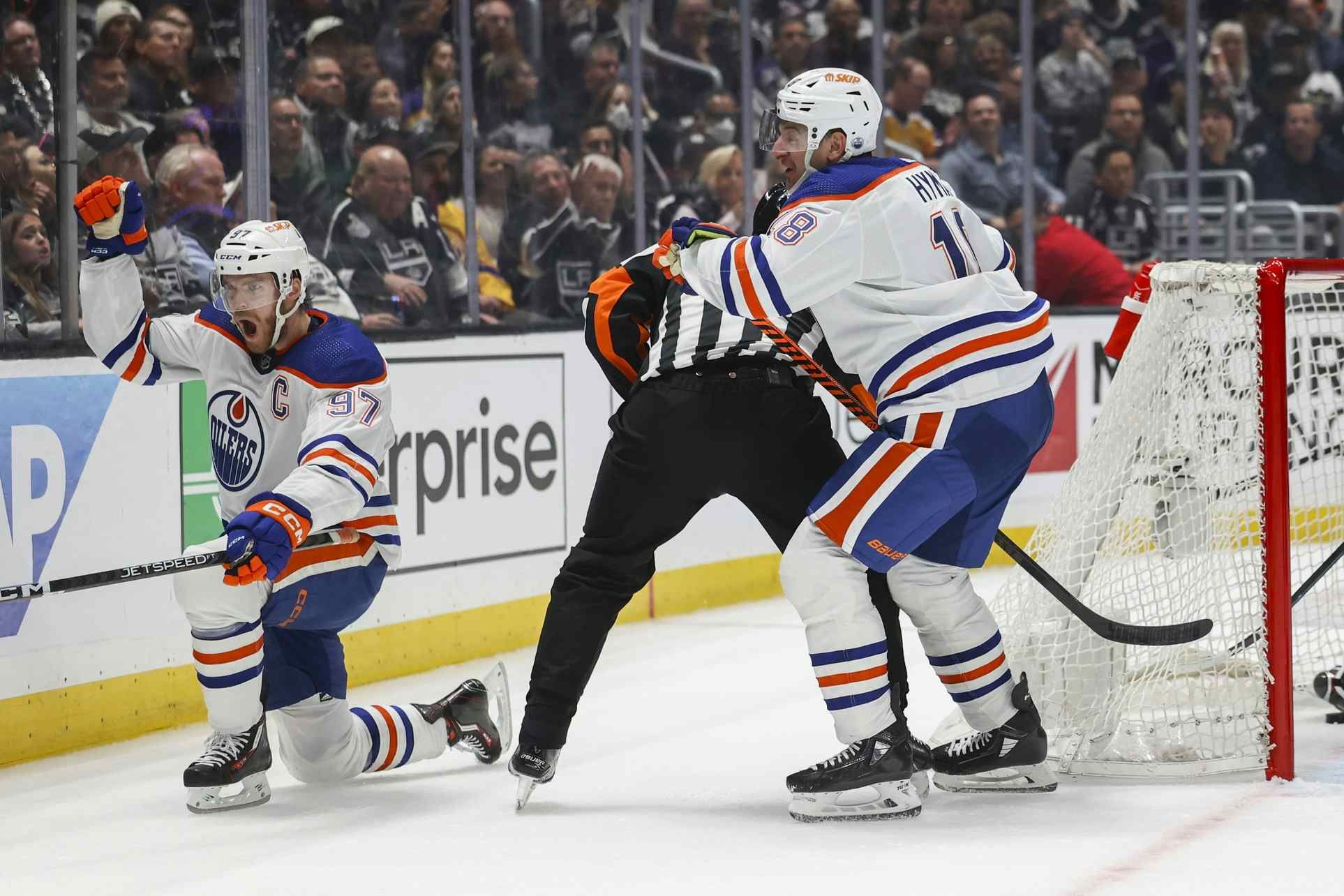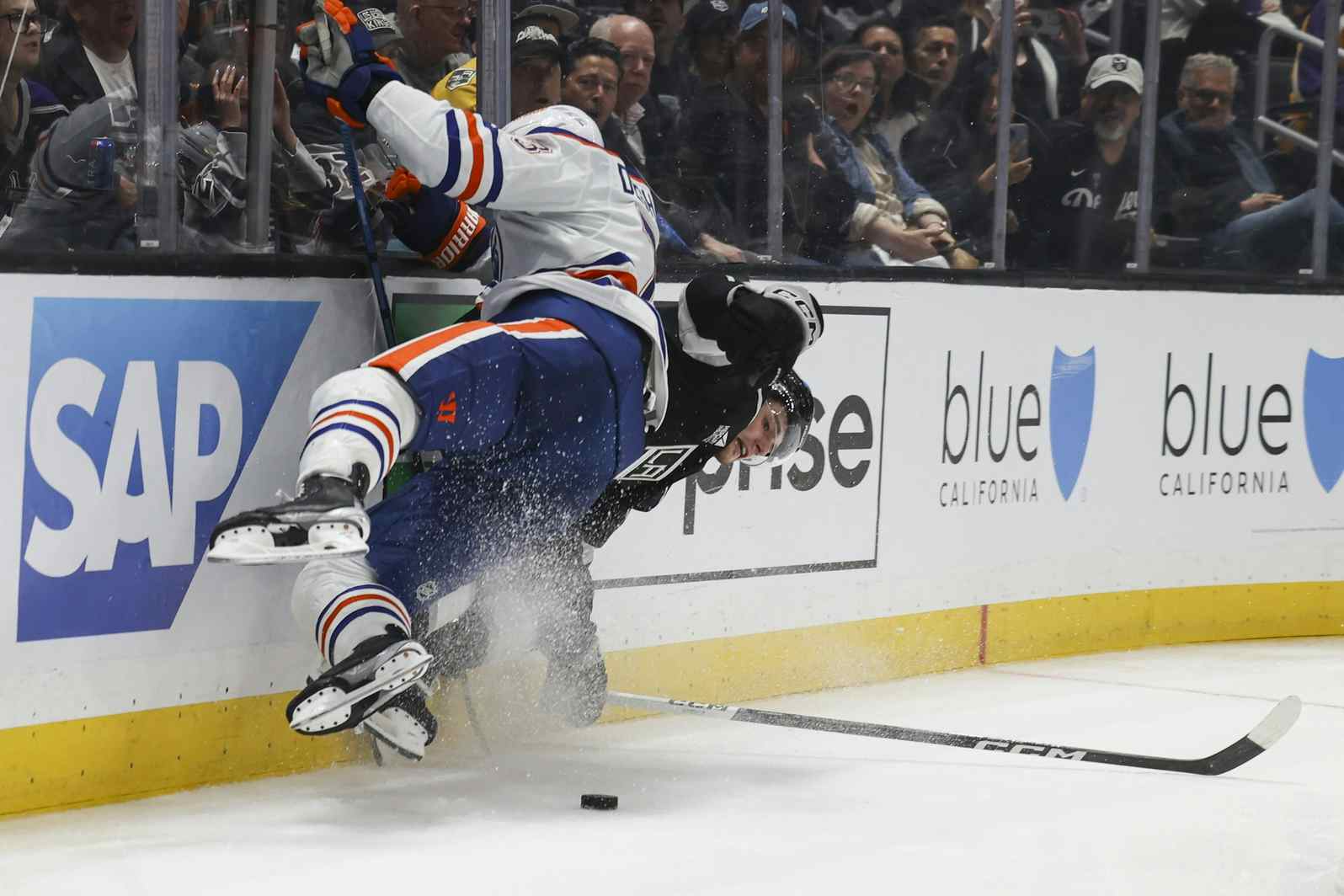Has NHL Drafting Improved?

By Jason Gregor
3 years agoThe 2020 NHL draft begins tomorrow with the first round and wraps up on Wednesday with rounds two through seven. There will be 216 picks (Arizona was forced to forfeit their second round pick for violating the NHL’s rules on pre-combine testing). Of those picks, how many should we expect to become regular NHLers?
What determines a legit NHL player? I looked at the past 50 years of NHL hockey and I think a fair number is 200 games played. The skill of players is a different topic, but it seems the 200 game mark is a fair number, and that is what we will use today.
There is always much excitement heading into the draft. And there should be. Teams will draft some really good players, some who will become superstars, others very good and some who will have solid NHL careers. It is a big deal, but what are realistic expectations of how many picks can become NHL players?
I went through every draft dating back to the 1969 draft. The drafts from 1963-1968 didn’t have enough players, so I didn’t include them.
Here is what the headers stand for:
#of Picks: Total picks in that year’s draft class.
1st RD: Number of picks in the first round.
200+GP: Number of players in draft class who played 200+ games.
%1stRD 200GP: The % of 1st round picks who played 200+ games.
%of Picks 200GP: The % of total picks who played 200+ games.
RD1: Number of players in first round that year who played 200+ games.
RD2-3: Number of players in the 2nd and 3rd round from that year who played 200+ games.
RD4+: Number of players from the 4th round and later who played 200+ games.
FWDS: The amount of forwards who played 200+ games.
D: The number of D-men who played 200+ games.
G: The number of goalies who played 200+ games.
400GP: The amount of players who played 400+ games.
1000GP: Total numbers of players who skated in 1000+ games.
500G: Amount of players who scored 500+ goals.
1000PTS: Number of players who scored 1000+ points.
1st RD: Number of picks in the first round.
200+GP: Number of players in draft class who played 200+ games.
%1stRD 200GP: The % of 1st round picks who played 200+ games.
%of Picks 200GP: The % of total picks who played 200+ games.
RD1: Number of players in first round that year who played 200+ games.
RD2-3: Number of players in the 2nd and 3rd round from that year who played 200+ games.
RD4+: Number of players from the 4th round and later who played 200+ games.
FWDS: The amount of forwards who played 200+ games.
D: The number of D-men who played 200+ games.
G: The number of goalies who played 200+ games.
400GP: The amount of players who played 400+ games.
1000GP: Total numbers of players who skated in 1000+ games.
500G: Amount of players who scored 500+ goals.
1000PTS: Number of players who scored 1000+ points.
| Year | #of Picks | 1st RD | 200+GP | %1stRD 200GP | %of Picks 200GP | RD 1 | RD2-3 | RD4+ | FWDS | D | G | 400GP | 1000GP | 500G | 1000PTS |
| 1969 | 84 | 13 | 24 | 61.50% | 28.57% | 8 | 9 | 7 | 14 | 8 | 2 | 17 | 3 | 0 | 1 |
| 1970 | 115 | 14 | 30 | 78.50% | 26.08% | 11 | 14 | 5 | 20 | 6 | 4 | 21 | 2 | 1 | 2 |
| 1971 | 117 | 14 | 26 | 78.50% | 22.22% | 11 | 12 | 3 | 19 | 6 | 1 | 17 | 4 | 2 | 2 |
| 1972 | 152 | 16 | 33 | 87.50% | 21.71% | 14 | 12 | 7 | 17 | 11 | 3 | 24 | 2 | 0 | 0 |
| 1973 | 168 | 16 | 37 | 81.25% | 22.02% | 13 | 12 | 12 | 21 | 15 | 1 | 25 | 5 | 1 | 2 |
| 1974 | 247 | 18 | 50 | 77.77% | 20.24% | 14 | 16 | 20 | 27 | 20 | 3 | 30 | 3 | 1 | 1 |
| 1975 | 217 | 18 | 36 | 66.67% | 16.58% | 12 | 13 | 11 | 20 | 12 | 4 | 28 | 1 | 0 | 1 |
| 1976 | 135 | 18 | 39 | 55.55% | 28.88% | 10 | 17 | 12 | 25 | 13 | 1 | 20 | 2 | 0 | 1 |
| 1977 | 185 | 18 | 39 | 94.44% | 21.08% | 17 | 10 | 12 | 22 | 13 | 4 | 27 | 3 | 1 | 1 |
| 1978 | 234 | 18 | 52 | 83.33% | 22.22% | 15 | 14 | 23 | 37 | 12 | 3 | 36 | 5 | 0 | 1 |
| Year | # of Picks | 1st RD | 200+GP | %1stRD 200GP | %of Picks 200GP | RD 1 | RD2-3 | RD4+ | FWDS | D | G | 400GP+ | 1000GP | 500G | 1000PTS |
| 1979 | 126 | 21 | 67 | 100% | 53.17% | 21 | 26 | 20 | 43 | 20 | 4 | 50 | 17 | 3 | 7 |
| 1980 | 210 | 21 | 71 | 76.10% | 33.80% | 16 | 23 | 32 | 43 | 25 | 3 | 55 | 9 | 1 | 6 |
| 1981 | 211 | 21 | 44 | 71.40% | 20.85% | 15 | 11 | 18 | 19 | 19 | 6 | 34 | 7 | 2 | 3 |
| 1982 | 252 | 21 | 52 | 85.71% | 20.63% | 18 | 15 | 19 | 36 | 13 | 3 | 38 | 15 | 2 | 5 |
| 1983 | 242 | 21 | 61 | 85.71% | 25.20% | 18 | 19 | 24 | 37 | 18 | 6 | 49 | 8 | 1 | 2 |
| 1984 | 250 | 21 | 54 | 66.67% | 21.60% | 14 | 20 | 20 | 28 | 23 | 3 | 44 | 18 | 3 | 3 |
| 1985 | 252 | 21 | 48 | 61.90% | 19.04% | 13 | 13 | 22 | 26 | 18 | 4 | 34 | 6 | 1 | 1 |
| 1986 | 252 | 21 | 43 | 57.14% | 17.06% | 12 | 11 | 20 | 22 | 19 | 2 | 35 | 7 | 0 | 2 |
| 1987 | 252 | 21 | 46 | 71.40% | 18.25% | 15 | 15 | 16 | 22 | 18 | 6 | 32 | 10 | 3 | 4 |
| 1988 | 252 | 21 | 44 | 47.61% | 17.46% | 10 | 8 | 26 | 32 | 10 | 2 | 31 | 13 | 4 | 6 |
| 1989 | 252 | 21 | 52 | 61.90% | 20.63% | 13 | 18 | 21 | 33 | 16 | 3 | 42 | 11 | 1 | 3 |
| 1990 | 252 | 21 | 56 | 76.10% | 22.22% | 16 | 13 | 27 | 32 | 19 | 5 | 42 | 15 | 3 | 3 |
| Year | # of Picks | 1st RD | 200+GP | %1stRD 200GP | %of Picks 200GP | RD 1 | RD2-3 | RD4+ | FWDS | D | G | 400GP+ | 1000GP | 500G | 1000PTS |
| 1991 | 264 | 22 | 54 | 77.27% | 20.45% | 17 | 17 | 20 | 35 | 16 | 3 | 42 | 10 | 0 | 2 |
| 1992 | 264 | 24 | 52 | 54.15% | 19.69% | 13 | 17 | 22 | 31 | 19 | 2 | 40 | 7 | 0 | 0 |
| 1993 | 286 | 26 | 62 | 91.66% | 21.67% | 22 | 16 | 24 | 41 | 16 | 5 | 49 | 15 | 0 | 0 |
| 1994 | 286 | 26 | 66 | 57.69% | 23.07% | 15 | 19 | 32 | 41 | 16 | 9 | 48 | 7 | 0 | 2 |
| 1995 | 234 | 26 | 51 | 69.23% | 21.79% | 18 | 12 | 21 | 26 | 16 | 9 | 33 | 7 | 1 | 1 |
| 1996 | 241 | 26 | 49 | 53.84% | 20.33% | 14 | 15 | 20 | 30 | 18 | 1 | 38 | 5 | 0 | 0 |
| 1997 | 246 | 26 | 41 | 53.84% | 16.66% | 14 | 6 | 21 | 26 | 13 | 2 | 29 | 10 | 2 | 3 |
| 1998 | 258 | 27 | 61 | 81.48% | 23.64% | 22 | 17 | 21 | 38 | 21 | 2 | 40 | 12 | 0 | 0 |
| 1999 | 272 | 28 | 41 | 46.42% | 15.07% | 13 | 13 | 15 | 24 | 15 | 2 | 29 | 4 | 0 | 2 |
| 2000 | 293 | 30 | 46 | 56.66% | 15.69% | 17 | 15 | 14 | 24 | 17 | 5 | 37 | 7 | 0 | 0 |
| 2001 | 289 | 30 | 59 | 63.33% | 20.41% | 19 | 14 | 26 | 34 | 19 | 6 | 44 | 5 | 0 | 0 |
| 2002 | 291 | 30 | 50 | 73.33% | 17.18% | 22 | 14 | 14 | 28 | 19 | 3 | 39 | 7 | 0 | 0 |
| 2003 | 292 | 30 | 69 | 90.00% | 23.63% | 27 | 19 | 23 | 43 | 18 | 5 | 54 | 18* | 0 | 2* |
| 2004 | 291 | 30 | 63 | 66.67% | 21.64% | 20 | 19 | 24 | 38 | 20 | 5 | 44 | 8* | 1 | 2 |
| Year | # of Picks | 1st RD | 200+GP | %1stRD 200GP | %of Picks 200GP | RD 1 | RD2-3 | RD4+ | FWDS | D | G | 400GP+ | 1000GP | 500G | 1000PTS |
| 2005 | 230 | 30 | 50 | 60.00% | 21.73% | 18 | 14 | 18 | 29 | 16 | 5 | 36 | 12* | 1* | 2* |
| 2006 | 213 | 30 | 44 | 66.67% | 20.65% | 20 | 14 | 10 | 31 | 8 | 5 | 32 | 1 | 0 | 1* |
| 2007 | 211 | 30 | 43 | 63.33% | 20.37% | 19 | 9 | 15 | 26 | 17 | 0 | 33 | 4* | 1* | 1 |
| 2008 | 211 | 30 | 49 | 60.00% | 23.22% | 18 | 14 | 17 | 20 | 26 | 3 | 34 | 5* | 1* | 1* |
| 2009 | 211 | 30 | 53 | 66.67% | 25.11% | 20 | 16 | 17 | 34 | 17 | 2 | 39 | N/A | N/A | N/A |
| 2010 | 210 | 30 | 55 | 73.33% | 26.19% | 22 | 19 | 14 | 38 | 14 | 3 | 28 | N/A | N/A | N/A |
| 2011 | 211 | 30 | 55* | 70.00% | 26.06% | 21 | 22 | 12 | 41 | 13 | 1 | 37* | N/A | N/A | N/A |
| 2012 | 211 | 30 | 60* | 80.00% | 28.43% | 24 | 22 | 18 | 32 | 26 | 6 | N/A | N/A | N/A | N/A |
| 2013 | 211 | 30 | 54* | 80.00% | 25.59% | 24 | 18 | 36 | 16 | 2 | N/A | N/A | N/A | N/A | |
| Year | # of Picks | 1st RD | 200+GP | %1stRD 200GP | %of Picks 200GP | RD 1 | RD2-3 | RD4+ | FWDS | D | G | 400GP+ | 1000GP | 500G | 1000PTS |
| 2014 | 210 | 30 | 49* | 83.33% | 23.33% | 25 | 12 | 12 | 39 | 7 | 3 | N/A | N/A | N/A | N/A |
| 2015 | 211 | 30 | 53* | 80.00% | 25.11% | 24 | 16 | 16 | 35 | 19 | 2 | N/A | N/A | N/A | N/A |
I felt it would be too much of a projection to use 2016 and beyond. And for the career total of 1,000 games played, 500 goals and 1,000 points anything after 2009 was also too much of a guess. For instance, earlier today I would have had Matt Niskanen played 1,000 games from the 2005 draft. But now reports are he will retire. He is 33 years old and 51 games shy of 1000. Without today’s announcement I would have projected the 2005 class to have 13 players reach 1,000 games played. So I’d rather play it safe and not project more than I did.
Since 1969, the NHL has drafted 10,604 players and 2,333 of them have played 200+ games. That equates to 22% of draft picks. I realize that goalies’ games played should likely be lower, to make it more fair for them, but even if I dropped it to 100 games played for goalies, then it would be at 22.9% (based on an average of two more goalies per draft class, which is what it was when I picked 10 random years).
THINGS OF NOTE…

1. The 1979 draft class has been widely considered the best of all-time and these numbers back it up. Their first round was perfect, albeit only 21 picks, but if you expand to the top-30 picks then 27 of them played 200+ games. Only the 2003 draft can match that. The remarkable feat was that 53% of the players drafted played over 200 games. I realize there were only 126 draft picks, but even if they drafted 210-211, like today, and none of them reached 200 games, the 67 players would still be the third most all-time. Why was this draft so good?
Only one 18 year old was drafted. He turned out pretty good, Mark Messier, but the rest were 19 and 20. I’ve long argued that increasing the draft age would help teams make better picks.
2. The four-year span from 2012-2015 had over 80% success rate of first round picks playing at least 200 games. No other time in NHL history has drafting been over 80% four consecutive seasons. I’m curious to see if that continues. Is drafting today better? I think so. There is more video for scouts to watch, after watching players in person. I’m curious to see if that trend continues.
3. From 1985-2000 teams across the board missed on a lot of picks. Eight times in that span was the league average on total draft picks playing 200+ games between 15.07% and 19.69%. A strong emphasis on big, strong, tough players led to many incorrect picks, but that was also the style of play in junior hockey in those days. It was rugged and dirty at times, and I suspect some of the skilled players were pushed out of those leagues, or didn’t flourish. That is just an opinion, based on what I watched, but I’d like to dig deeper into it.
4. The 2007 draft is the only one to not produce at least one goalie with 200 games played. Only four goalies of the 20 goalies drafted even played an NHL game: Scott Darling (126 GP), Allen York (11), Jeremy Smith (10) and Timo Pielmeier (1).
5. The 1996 draft produced the least productive group of forwards. Daniel Briere had the most career goals with 307, followed by Matt Cullen (266) and Marco Sturm (242). Cullen had the most points from this class with 731, followed by Briere (696) and @Zdeno Chara (656).
6. Jarome Iginla was a massive anomaly for six seasons. In the six drafts between 1991-1996, he was the only player to score 500+ goals. He tallied 625 goals and 1,300 points. The closest goals scorer and point-getter was Daniel Alfredsson (1994 class) with 444-713-1,157. The 1997 class produced Joe Thornton (420-1089-1,509), Patrick Marleau (562-626-1,188) and Marian Hossa (525-609-1,134). The kid from St. Albert was the best drafted goal scorer in the NHL for a 13-year span, between 1991-2003, until Alex Ovechkin arrived. It might sound strange, but sometimes I think Iginla was a tad under appreciated for how good he was.
7. Denis Potvin is the only D-man to be drafted first overall, 1973, and finish with the most points in his draft class. Paul Coffey (1980) led his class with 1,409 points, while Sergie Gonchar led the 1992 group with 811 points.
8. You might not know this, but Bernie Federko finished his career with 1,130 points. That was 444 more than any other player in his 1976 draft class. Kent Nilsson was second with 686.
9. Dave Taylor was the 210th pick in 1975, but he finished with the most games played (1,111) goals (431), assists (638) and points (1,069) from his class. Only two other players, Dennis Maruk and Mel Bridgeman, had more than 200 goals and 550 points. Taylor was the best value late round pick in NHL history, when you compare him to the rest of his draft class.
10. Drafting has improved slightly in recent years, but even with improvements you should expect fewer than 60 players from this draft to play 200+ games. It is important to remember that number when you read “who had the best draft” articles that come out days after the draft. They don’t mean very much, as history tells us after the first round it becomes extremely difficult to project which players will have legit NHL careers.
Draft Coverage Presented By Prime Staffing
We Are Staffing Experts.
Prime Staffing is matching quality work with quality workers. We provide verified and certified personnel with 24/7 Dispatch for flexible deployment.
Find quality work, find quality workers whether temporary, part-time, or full-time. Learn more about Prime Staffing by clicking here. You can also follow Prime Staffing on Facebook, Instagram, and LinkedIn.
Recently by Jason Gregor:
Recent articles from Jason Gregor







